It can be worrying for a plant owner if they notice signs their plant isn't doing well. Yellowing leaves and constantly dry soil are never good, but it doesn't mean it's time to give up hope. If you notice these signs in your parlor palm, it can mean several things.
Parlor palms may start to wither or die if their needs are not being met or properly balanced. If you notice brown or yellowing leaves, it could mean:
- Too much or not enough watering
- Not enough humidity
- Wrong soil
- Too much or not enough light
- Pests
- Wrong temperatures
These are the most common issues to occur with a parlor palm. But the good news is there are solutions for each of these problems. If you notice differences in your plant quickly enough, you should be able to correct problems before lasting damage occurs.
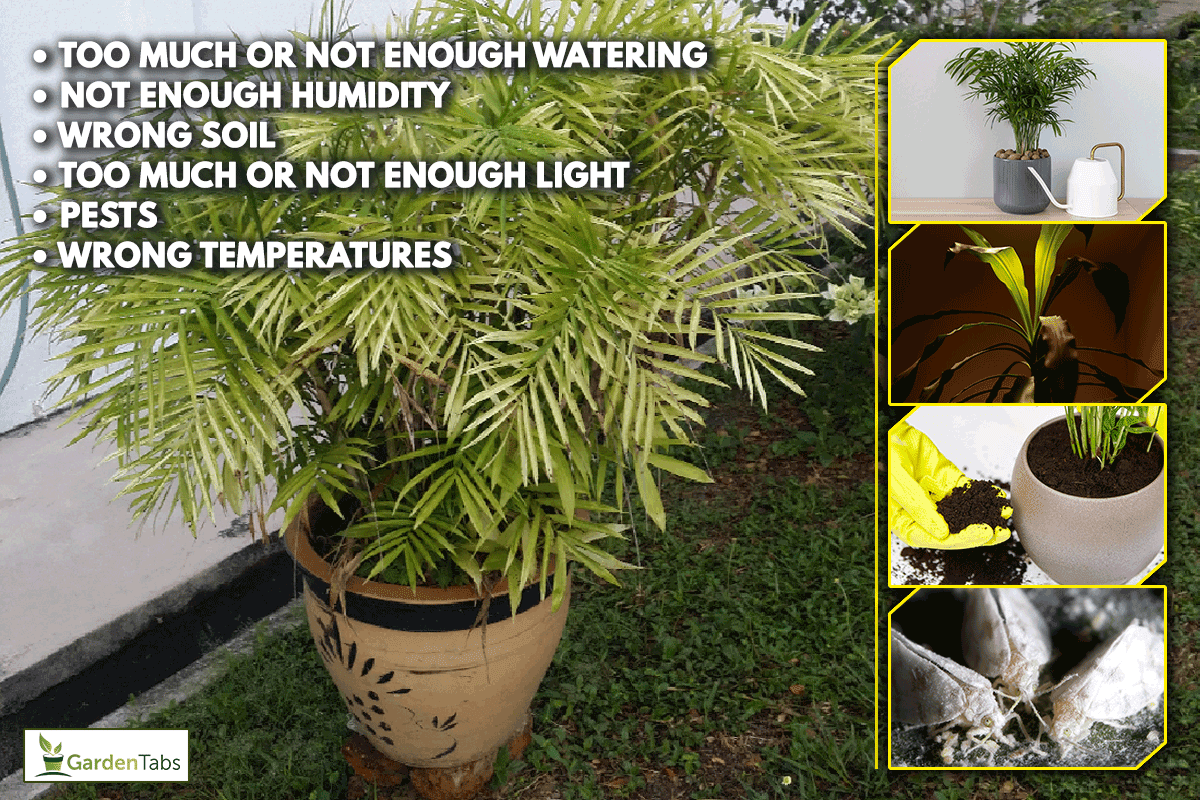
Water, Humidity, and Soil - Why Does It Matter?
Parlor palms are relatively easy plants to care for, but balancing the right amount of water for them can be a bit challenging. This is because they need water in two different ways.
They need water at their roots like most other plants, but they also prefer having water on the leaves. This is where the humidity comes in.
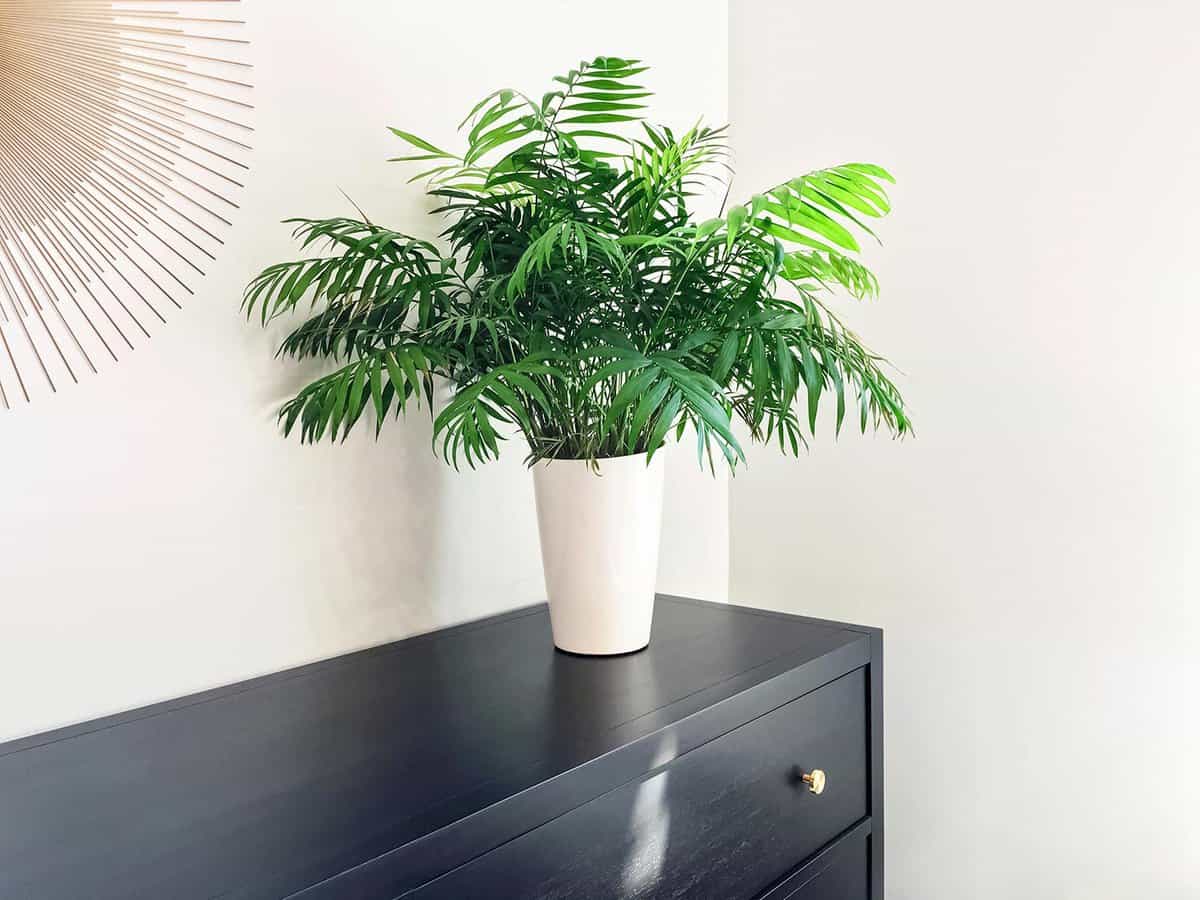
Parlor palms are tropical plants native to rainforests in certain areas. Because of this, they like having a decent amount of humidity. This means to keep this plant thriving, you will need to spray the leaves of your parlor palm with water a few times a day.
By doing this, you will keep the humidity around your plant at a level it will be comfortable.
However, do not let this need for humidity make you think your plant will love lots of water at its roots. These plants can easily be over-watered, making it important to have your parlor palm in a pot that drains excess water effectively.
Make sure the soil covering the roots doesn't dry out, but also make sure no water is standing.
The type of soil used affects how well you can balance the right amount of water for your parlor palm. It is necessary to have potting soil that drains easily.
Because of this, try one that has sand or coconut coir in the mixture. Luckily, these are fairly common mixtures to find.
Check out this item on Amazon!
Lighting
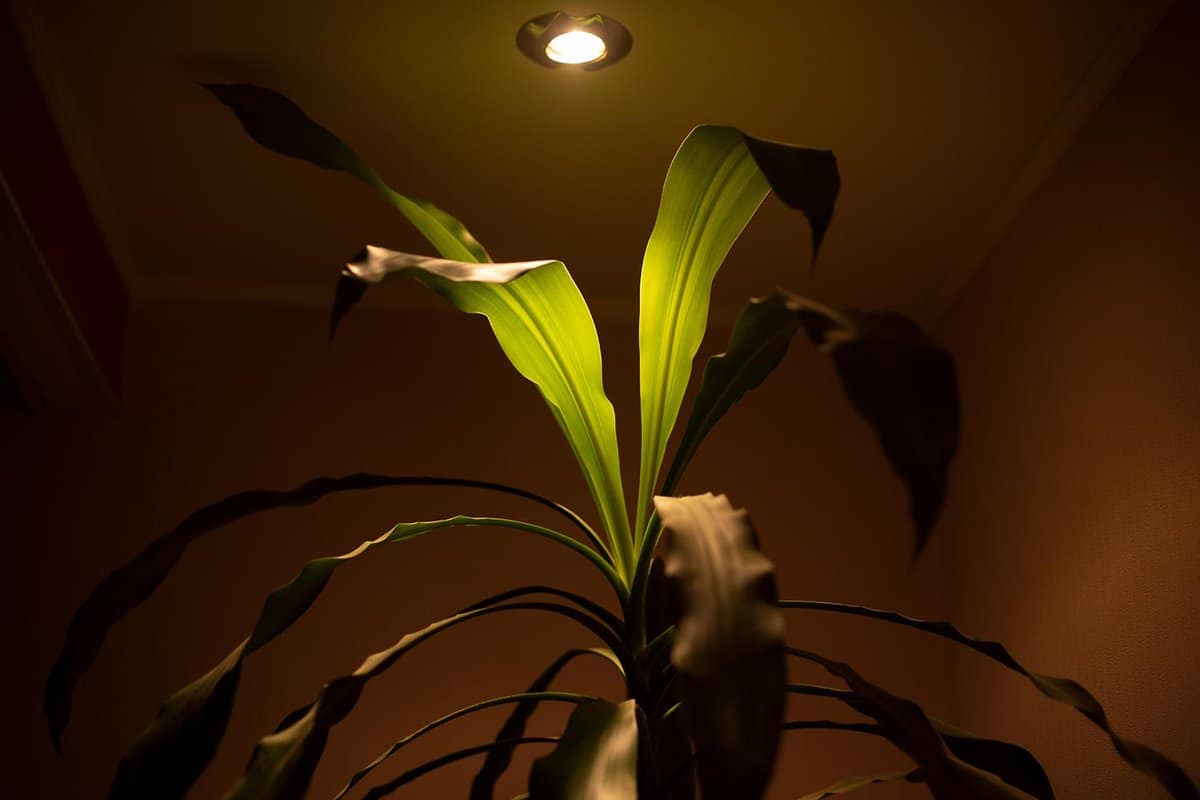
As mentioned, these plants are native to the floors of rainforests. Because such a location doesn't get much direct sunlight, these plants are great for keeping indoors.
They do very well with low lighting. However, it is important to understand what kind of light they need because too much harsh light can start to damage the plant.
These plants, like any other, require regular amounts of light to survive. But because parlor palms only need low light, it is best to understand what time of day is ideal for letting your plant soak up the sun.
Sunlight in the early morning and the late afternoon is perfect for these gentle little trees. Sunlight from hotter times of the day can burn the leaves.
If having the parlor palm in sunlight at these times is difficult for you, there are other options. Parlor palms can be just as healthy with artificial lighting.
Lighting found in most homes should be more than enough to satisfy the ends of a parlor palm. It is important to make sure the light is indirect and not too harsh.
Pests
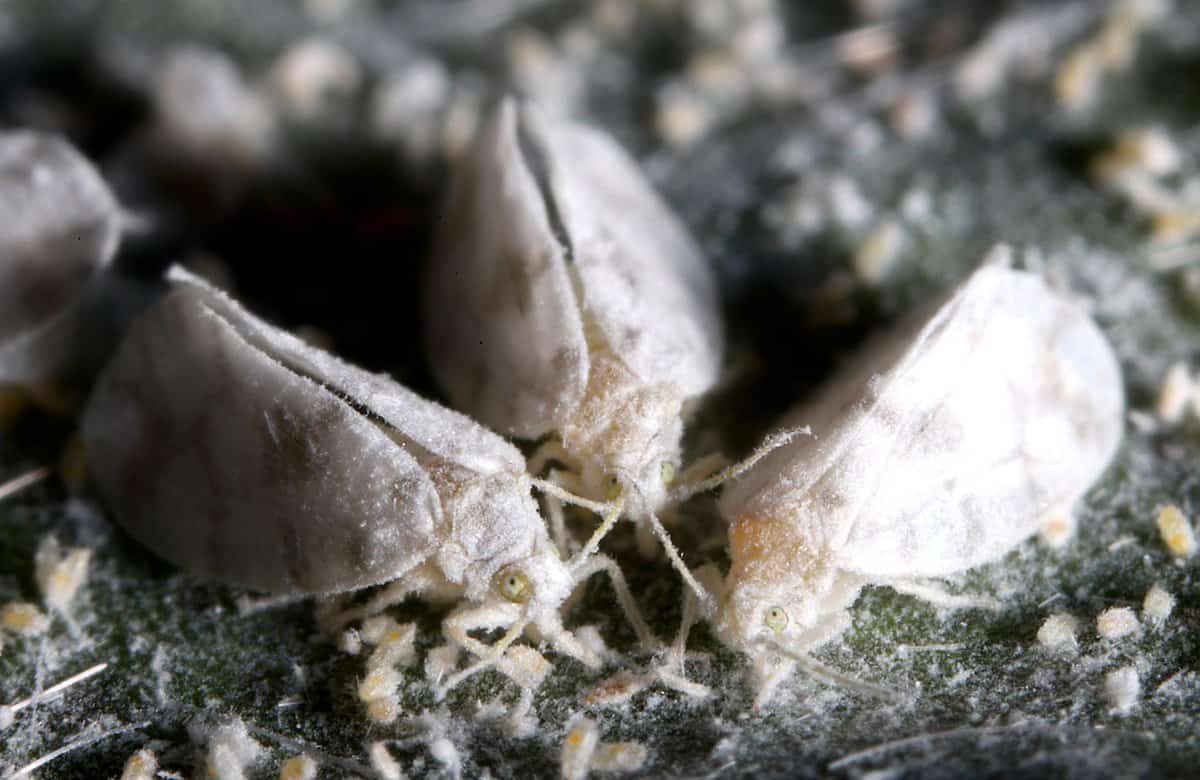
Unfortunately, parlor palms are at risk of attracting pests. The sooner you can recognize and treat an infestation, the more likely it is for the parlor palm to recover. The insects a parlor palm may attract include:
- Aphids
- Mealybugs
- Whitefly
- Scale
- Spider mites
Though each of these pests has different warning signs of their presence, you can cure most plants of an infestation by applying rubbing alcohol to the leaves. If this doesn't help, you may need a more specific treatment for whichever pest your plant has picked up.
Temperature
Because these palms come from rainforests, it is not surprising to learn they prefer warmer temperatures. Parlor palms prefer to be in indoor spaces where the temperature stays between 60-85 degrees Fahrenheit.
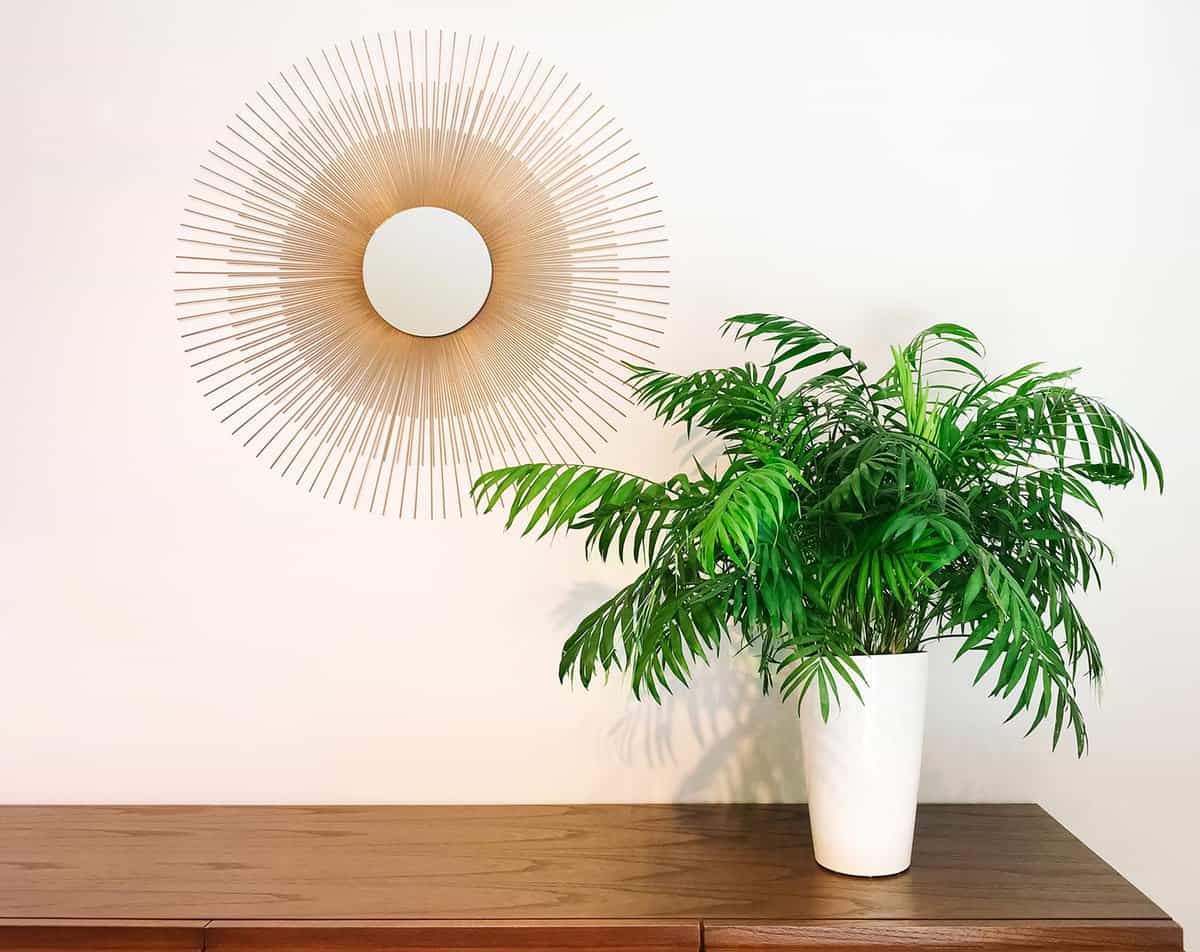
These plants do not do well in colder temperatures. Anything too cold will cause them to perish.
If you live somewhere cold and want to make sure your parlor palm is warm enough, it is possible to heat it without drying it out. You can keep the soil slightly dryer than you normally would.
This will allow the roots to maintain a little heat. Having wet soil while in a cold environment will only make the low temperature worse for the parlor palm.
How To Make A Parlor Palm Healthier?
If you have tried addressing the common issues already discussed and are still having issues with your parlor palm, there are a few other things you can try. Though, consider this option a last resort because of the risk of losing the plant.
You can move it to another pot. By re-potting the parlor palm, you can give it more space for roots and better draining.
On the other hand, if correcting one or more of the mentioned problems has helped your parlor palm, you may still want to help it thrive a bit more.
In this case, you can add a little balanced 20-20-20 fertilizer once a month or every other month. Using fertilizer more often than this can cause chemical burns on the roots of your parlor palm.
Get this item on Amazon!
Can You Remove Brown Palm Leaves?
While working towards bettering your parlor palm, you may wonder if you can remove the brown or yellow leaves without doing more damage. The good news is you absolutely can! However, it is possible to damage healthy portions of the tree if it you fail to do this correctly.
If the discoloration goes all the way down to the base of the leaf, you can gently remove the entire leaf from the plant. Be very careful when doing this, as this could break or tear healthy sections.
When only small segments of a leaf are brown or yellow, try to only trim those areas. Removing all discoloration will make it easier to notice if more appears.
How Often To Water A Parlor Palm?
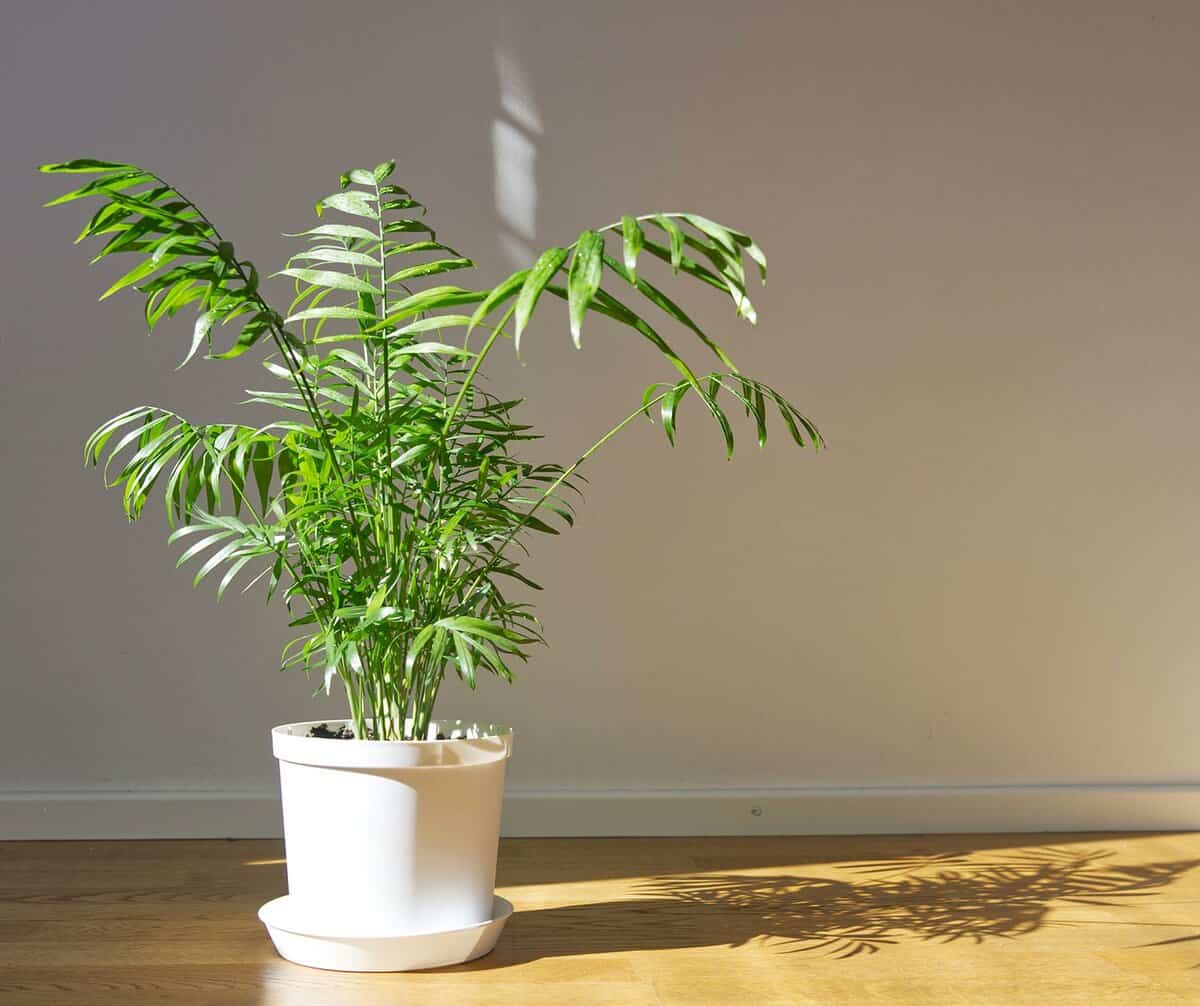
While we already mentioned watering, it may be helpful to discuss how often they need it. Only water parlor palms once a week during hotter seasons.
During winter, when water will not evaporate as quickly, it may only need water every two weeks. It is best to leave enough time between watering for the soil to dry completely, but do not leave it dry for several days.
When you do water your parlor palm, make sure to only add enough water to wet the soil thoroughly without leaving standing water in the pot. It is best to pour the water in slowly to better assess when you can stop.
Can A Parlor Palm Go Outside?
Though they are considered indoor palm trees, you can keep parlor palms outside during warm seasons. Parlor palms thrive in warmer weather, but it is important to place them in shaded areas to avoid direct sunlight.
It could also be necessary to bring them indoors in the evenings if temperatures drop below 55 degrees Fahrenheit.
It is also a priority to check the weather before putting a parlor palm outside for the day. Strong winds can damage parts of the tree, while heavy rain can quickly over-water your parlor palm.
It may also be best to leave them inside if the temperature gets too high. This can dry out the soil faster and scorch the roots.
Summary
Parlor palms are usually easy indoor plants to take care of. However, they can struggle if there are issues with water, humidity, lighting, and other factors.
Determining which of these is the problem is the first step in saving your parlor palm. If correcting these issues doesn't seem to help, consider repotting your tree.
If you are a new owner of a parlor palm and looking for more information, please check out Parlor Palm Care Guide For Beginners.
Or if you are looking to buy one, you may enjoy Where To Buy Palm Trees (29 Online Stores).


